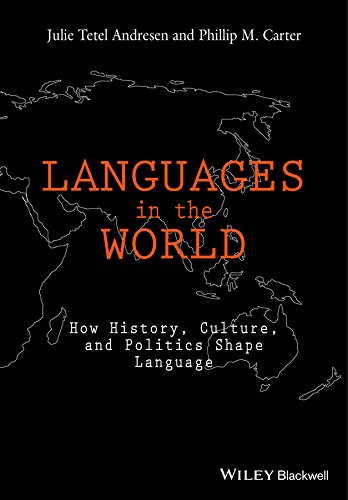Sinhala: Language and Power
In the Indian Ocean off the south coast of India is the island nation of Sri Lanka. The majority population is the Sinhalese, an ethnogroup who tend to be Buddhists and who speak Sinhala, an Indo-European language. They share the island with the minority Tamils, who tend to be Hindu. Their language, Tamil, is Dravidian.
In the 1980s the people of Sri Lanka began to suffer the experience of terrorist bombings in their capital city, Colombo, and surrounding countryside, perpetrated by Tamil Tiger separatists who wanted their own state.
Earlier in that decade, one Tamil Tiger, Shankar Rajee (pseudonym), on a trip to London met up with militants from the Palestine Liberation Organization, traveled with them to Beirut, and imported from the PLO the practice of terrorist bombings. In return, here is what Rajee exported to the Middle East: the wearable detonation device known as the suicide belt, suicide bombing itself, the use of women in suicide attacks, and the idea of tying together terrorists and financiers into an international network of militant uprisings.
What could have been the impetus behind Rajee’s desperate need to create the techniques of modern terrorism?
The answer is: issues surrounding language and its social-psychological cousin, religion, that swirled into the vacuum created when the British colonialists left Ceylon in 1948.
(Note: The state of Israel also came into being in 1948. The Palestine Liberation Organization was founded in 1964. The first Palestinian suicide attack was in 1989.)
Suddenly the island became an independent nation and eventually renamed itself The Republic of Sri Lanka. One of the seemingly simple and natural and yet most disastrous moves the new government made was the passage of the Sinhala Only Act in 1956 which ended the status of English as the official language and barred Tamil from the schools and government institutions.
Overnight, more than a million Tamils became officially illiterate, and all of them were now at a severe disadvantage in obtaining jobs in the civil service. Violence broke out in Tamil communities, which in turn provoked a Sinhalese backlash.
Over the next fifteen years, more language laws and other pro-Sinhala reforms were enacted, and government troops were regularly deployed in agitated Tamil communities. By the 1970s, interest in a separate Tamil nation evolved into a bona-fide separatist movement with militant leanings. In 1975, the Liberation Tigers of Tamil Eelam (‘homeland’) was formed to fight for Tamil freedom in Sri Lanka. The group came to be known as the Tamil Tigers, and their violence eventually escalated into outright terrorism, which continued nearly unabated for the next two decades.
Finally, in 2002, the war-fatigued nation decided upon a cease-fire agreement between the Tamil Tigers and the Sinhalese-led government. The issue of Tamil separatism came to an end. Unfortunately the violence did not, and there was another round of it from 2006-2009. This time, however, language issues could not be said to be the immediate cause because the origins of the conflict were lost and only the desire to avenge decades of killings remained.
The point is that language is an important resource used by those in power in a nation-state who want to promote the rights and privileges of one group and/or to curtail the rights and privileges of another. The story of Sri Lanka should be a cautionary tale for people in power creating language policy, but, alas, it is not.
 Turning to Ukraine, what did the new government in Kiev do in February, 2014? It revoked its previously tolerant and multicultural language law, one that protected the rights of Russian, Hungarian, Moldovan, and Romanian speakers within the country’s borders. The revocation of the law was aimed at disenfranchising mostly Russian speakers who were, justifiably, angered by the move. Whatever else the purpose of the revocation could have been, it most certainly did not help an already bad situation.
Turning to Ukraine, what did the new government in Kiev do in February, 2014? It revoked its previously tolerant and multicultural language law, one that protected the rights of Russian, Hungarian, Moldovan, and Romanian speakers within the country’s borders. The revocation of the law was aimed at disenfranchising mostly Russian speakers who were, justifiably, angered by the move. Whatever else the purpose of the revocation could have been, it most certainly did not help an already bad situation.
However, the Ukrainians were not the only ones poking at a linguistic hornet’s nest. This same year the Russians tossed the expression Little Russian into the talk surrounding the Crimean conflict. The phrase was first used by Tsar Nicholas II (1868-1918) who is reported to have said: “There is no Ukrainian language, just illiterate peasants speaking Little Russian.”
For those in power: The case of Sinhala is a cautionary tale. If you control the language of the discourse, yes, you will control the discourse. But keep in mind: the moment you deny the language rights of others within your borders, you have a fight on your hands.
From Chapter Nine, “Postcolonial Complications: Violent Outcomes” from Languages in the World. How History, Culture, and Politics Shape Language. (affiliate) Julie Tetel Andresen and Phillip M. Carter. Wiley-Blackwell, forthcoming August 2015.
Categorised in: Adventure, East Asia, Language, Thoughts
This post was written by Julie Tetel Andresen
You may also like these stories:
- google+
- comment



